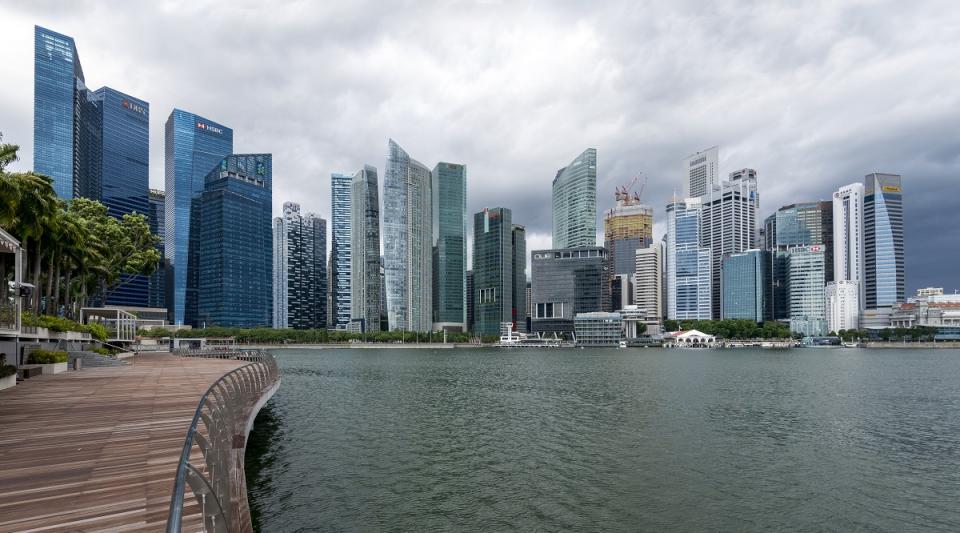Citi Research downgrades Singtel to ‘neutral’ following lowered estimates

Citi has also lowered its target price to $2.68.
Citi Research analysts Arthur Pineda and Luis Hilado have downgraded Singapore Telecommunications (Singtel) Z74 to “neutral” with a reduced target price of $2.68 from $3.13 after lowering its estimates for the telco’s key markets, Indonesia and India.
In their Aug 9 report, Pineda and Hilado trimmed their normalised FY2024 to FY2026 estimate NPAT for Indonesia by 2% to 9%, attributing it to slower growth due to market share slippage. For India, the analysts cut their NPAT estimates for FY2024 to FY2026 by 4% to 14% due to the deferral of India tariff hikes and the impact of Africa devaluation on a net of one-offs. Notably, both growth engines account for an estimated 56% of the analysts FY2024 NPAT.
They also credit the revised estimate to reflect the latest foreign exchange (forex) trends with a firmer Singapore dollar.
“Reductions in our NPAT forecasts for its key growth drivers have reduced our Singtel NPAT estimates by around 7%, putting our normalised FY2024/FY2025 estimate NPAT at about 9%/4% below consensus. We see room for the Street to temper estimates,” say the analysts.
Pineda and Hilado also note that further special dividends are difficult without asset sales, with the remaining 2.5 cents from the group’s FY2023 special dividend going ex-div in August.
“The question we now get from most investors is whether more special dividends can materialise in the next 12 to 24 months. We estimate that Singtel will generate around $0.9 billion in average annual free cash flow (FCF) for FY2024 to FY2026, factoring in committed Optus spectrum payments and land sale proceeds from its SG HQ redevelopment,” opines Pineda and Hilado.
The analysts observe that this estimation is below the around $2 billion average annual cash outflow for dividends, based on consensus estimates.
They understand that Singtel could still “sustain normal yields” by dipping into cash reserves built on prior asset sales, but further special dividends in the near-term “could be difficult” unless the group quickly divests assets.
“Even with $1 billion to $2 billion in excess proceeds, we find room for dividend upside to be relatively limited unless profitability materially improves or investment requirements decline significantly,” note the analysts.
Alongside their other observations, Pineda and Hialdo also forecast an about 15% recurring EPS compound annual growth rate (CAGR) for FY2023 to FY2025 for Singtel, placing the group in-line with the analysts' aggregate Singapore market index growth.
“At 4% to 5% normal dividend yield, the stock has some downside protection, but it remains lower versus Singapore banks and REITS,” writes Pinealda and Hilado.
Relative to regional telecommunication groups, they find Singtel’s competitors, Advanced Infocom Service (AIS), Indosat and XL Axiata (XL) more “compelling”, owing to their direct price repair and margin expansion outlooks.
Downside risks noted by the analysts that could push the shares below their target price include Singetel’s benchmark stock status rendering the group vulnerable to border market sell-downs, volatility in regional currencies which could result in varying Singapore dollar translations and values, as well as potential earnings risks being linked to new expansion areas such as enterprise services.
Meanwhile, upsides include the effective monetisation of assets such as data centres and enterprises which could allow for asset revaluations, an improvement in competition in key growth engines such as Indonesia and India, and lastly a significant easing of interest rates, which would bring back interest into yield plays.
As at 2.10pm, shares in Singtel are trading at 1 cent higher or 0.41% up at $2.47
See Also:
Click here to stay updated with the Latest Business & Investment News in Singapore
Analysts split on OCBC following 1HFY2023 results, with target prices ranging from $12.70 to $14.96
Analysts optimistic on Sembcorp Industries, all keep 'buy' at raised target prices
Maybank keeps ‘buy’ on MPACT but lowers TP to $1.70 on funding headwinds
Get in-depth insights from our expert contributors, and dive into financial and economic trends

 Yahoo Finance
Yahoo Finance 